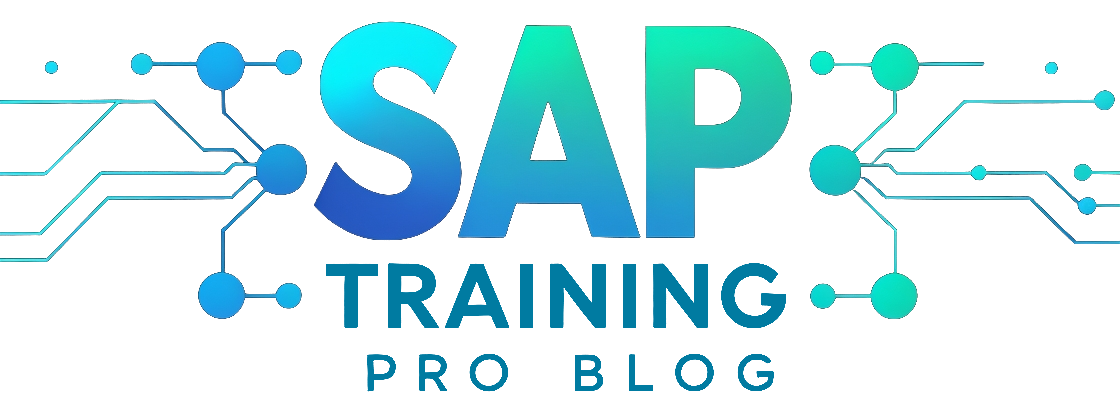Overcoming Challenges in SAP Implementation: Lessons Learned

Implementing SAP can be a complex and challenging process for organizations. From insufficient planning to lack of user adoption, there are various hurdles that need to be overcome to ensure a successful implementation. This article highlights the key challenges faced during SAP implementation and offers valuable lessons learned to help organizations navigate through these obstacles.
Table Of Content
One of the major challenges is insufficient planning. Without proper planning, organizations may face delays, cost overruns, and even failure in implementation. It is crucial to define the project scope, set realistic timelines, and allocate resources effectively. By investing time and effort in planning, organizations can mitigate risks and ensure a smooth implementation process.
Another critical challenge is the lack of user adoption. Even with a well-implemented SAP system, if users do not embrace the change, the implementation may not yield the desired results. Organizations should focus on effective training programs that cater to different user roles. Training should not only provide theoretical knowledge but also include hands-on practice to familiarize users with the SAP system. Additionally, change management strategies that address resistance to change, communicate the benefits of SAP, and engage stakeholders are essential for promoting user adoption.
Insufficient Planning
Insufficient planning can have detrimental effects on SAP implementation projects, resulting in delays and cost overruns. To ensure a successful implementation, it is crucial to invest time and effort in proper planning. This involves defining the project scope, setting realistic timelines, and allocating resources effectively.
Defining the project scope is essential to clearly identify the goals and objectives of the implementation. It helps in determining the specific functionalities and modules that will be implemented, ensuring that the project stays focused and on track. Setting realistic timelines is equally important, as it allows for proper resource allocation and scheduling of tasks. By establishing achievable deadlines, the project team can work efficiently and minimize delays.
Allocating resources effectively is another key aspect of planning. This includes assigning the right people with the necessary skills and expertise to the project. Adequate resources should be allocated to each phase of the implementation, ensuring that there is enough support and expertise available when needed. By addressing these planning challenges, organizations can overcome potential obstacles and pave the way for a successful SAP implementation.
Lack of User Adoption
User adoption is crucial for successful SAP implementation. When users do not fully embrace and utilize the new system, it can hinder the overall effectiveness of the implementation. There are several factors that can contribute to a lack of user adoption.
Firstly, inadequate training can be a major obstacle. If users are not properly trained on how to use the SAP system, they may struggle to understand its functionalities and benefits. This can lead to frustration and resistance to change. It is important to implement comprehensive training programs that are tailored to different user roles and include hands-on practice.
Resistance to change is another challenge that can impede user adoption. People are often resistant to change, especially when it comes to new technologies. It is essential to address this resistance by clearly communicating the benefits of the SAP system and involving users in the decision-making process. Engaging stakeholders and addressing their concerns can help alleviate resistance and encourage user acceptance.
Poor communication can also hinder user adoption. It is important to keep users informed about the implementation process, provide regular updates, and address any questions or concerns they may have. Open and transparent communication can help build trust and promote user engagement.
In order to overcome the challenges of user adoption, strategies need to be implemented. These may include developing comprehensive training programs, addressing resistance to change, and improving communication. By focusing on these areas, organizations can increase user acceptance and ensure a successful SAP implementation.
Effective Training Programs
Implementing comprehensive training programs is crucial for successful SAP implementation. These programs play a vital role in ensuring that users understand the SAP system and its benefits. To achieve this, training should be tailored to different user roles and include hands-on practice.
One effective approach is to create training modules that cater to specific user groups, such as end-users, administrators, and managers. This allows for targeted training that addresses the specific needs and responsibilities of each group. Additionally, hands-on practice should be incorporated into the training to provide users with practical experience using the SAP system.
An interactive training environment can be created through the use of simulations and exercises. This allows users to actively engage with the system and gain confidence in their ability to navigate and utilize its features. Furthermore, incorporating real-life scenarios and examples into the training can help users understand how the SAP system can be applied to their specific job roles.
Regular follow-up sessions and refresher courses should also be provided to reinforce learning and address any questions or concerns that may arise. This ongoing support ensures that users continue to develop their skills and remain proficient in using the SAP system.
Change Management Strategies
Change management strategies are essential in overcoming resistance to change during SAP implementation. Effective communication, stakeholder engagement, and addressing concerns are key elements that contribute to user acceptance and adoption.
Communication plays a crucial role in keeping stakeholders informed and engaged throughout the implementation process. Regular updates, clear explanations of the benefits of SAP, and addressing concerns promptly can help alleviate resistance and build trust.
Stakeholder engagement involves involving key individuals and departments in decision-making processes and seeking their input. This not only increases their sense of ownership but also ensures that their unique needs and perspectives are considered, leading to a smoother transition.
Addressing concerns is vital to address any fears or doubts that stakeholders may have. By actively listening to their feedback and providing solutions, you can alleviate their concerns and gain their support.
Overall, change management strategies are essential in ensuring user acceptance and adoption of SAP. By effectively communicating, engaging stakeholders, and addressing concerns, you can facilitate a successful implementation and maximize the benefits of SAP for your organization.
Data Migration Challenges
Data migration is a complex process that can lead to errors and inconsistencies. It involves transferring data from one system to another, which can be challenging due to differences in data formats, structures, and quality. To ensure accurate and complete data migration, proper data cleansing, mapping, and testing are essential.
- Data Cleansing: Before migrating data, it is crucial to clean and validate the data. This process involves identifying and resolving data quality issues such as duplicate records, missing values, and inconsistencies. By cleaning the data, you can eliminate errors and ensure that only accurate and relevant information is migrated.
- Data Mapping: Mapping the data involves aligning the fields and attributes of the source and target systems. It ensures that the data is transferred correctly and that the information is mapped to the appropriate fields in the new system. Proper data mapping reduces the risk of data loss or misinterpretation during migration.
- Data Testing: Thorough testing is necessary to validate the migrated data. This includes performing data integrity checks, verifying data accuracy, and testing the functionality of the new system. By conducting comprehensive tests, any discrepancies or errors can be identified and rectified before going live.
By addressing these data migration challenges through proper data cleansing, mapping, and testing, organizations can ensure a successful implementation of the SAP system. It is important to allocate sufficient time and resources to these tasks to minimize the risk of data inconsistencies and ensure a smooth transition to the new system.
Data Cleansing and Validation
Data cleansing and validation processes are crucial to ensure data integrity. Before migrating data into the SAP system, it is essential to identify and resolve any data quality issues. This step is vital for a successful implementation.
During the data cleansing process, all data is thoroughly examined and cleaned to remove any duplicates, inaccuracies, or inconsistencies. This ensures that the data being migrated is accurate and reliable. Validation processes are then implemented to verify the integrity and quality of the cleansed data.
To effectively cleanse and validate data, organizations can use various techniques. One approach is to create data cleansing rules and algorithms to automatically identify and correct common data errors. Another method is to establish data validation checks to ensure that the data meets specific criteria and standards.
In addition to these processes, it is crucial to involve stakeholders and subject matter experts in the data cleansing and validation activities. Their input and expertise can help identify and address any data quality issues that may arise.
By prioritizing data cleansing and validation, organizations can ensure that the data being migrated into the SAP system is accurate, reliable, and consistent. This sets the foundation for a successful implementation and enables users to make informed decisions based on trustworthy data.
Thorough Testing and Validation
Thorough testing and validation of migrated data is crucial for a successful SAP implementation. It helps in identifying and rectifying any discrepancies that may exist in the data. By conducting comprehensive testing, organizations can ensure the accuracy and functionality of the system.
During the testing phase, it is important to include end-to-end scenarios. This means testing the entire process from data migration to system functionality. By simulating real-life scenarios, organizations can uncover any potential issues and address them before the system goes live.
Furthermore, testing should not only focus on data accuracy but also on system functionality. This includes testing various functionalities and features of the SAP system to ensure that they are working as intended. By thoroughly testing and validating the system, organizations can have confidence in its performance and reliability.


